Are you 100% your business connectivity systems are secure?
Paying too much for leased lines?
Is your cloud connectivity solution fully optimised?
It’s vital your business, organisation or public sector department is connected internally and externally to all relevant sources when scaling for growth. So, what exactly is connectivity?
Let’s start with the dictionary definition for ‘Connectivity’. 'the ability of a computer, program, device, or system to connect with one or more others’
Source: The Cambridge Dictionary
What does Connectivity mean to you?
Connectivity can be quite a generic word and sometimes can be clarified as computer connectivity, or internet connectivity. Simply put, it’s what should be the seamless process for your hardware and software to be able to clearly connect and talk together internally, and online.
Connectivity helps bridge the gap between routers, gateways, backbone networks, PCs and in this day and age is very important the processes are optimised, especially with so many people now working remotely.
The Transferring of Data
Connectivity is recognised in the use of transferring important secure data back and forth within a company, or organisation.
This is where cyber security protection must also be taken into consideration to make sure no malicious 3rd parties can gain access via the connections.
Software Connectivity
Software connectivity enables the use for different software platforms to connect harmoniously together and for the end users to access it, regardless of their means of connectivity.
Wireless (Wi-Fi) LAN (local area network)
Computers and other mobile devices such as your phone are equipped with wireless LAN software used to send and receive communication signals inside various access points. You may also find this information helpful on our LAN and Wifi analytics here. A LAN enables you to connect to other computers and devices in your network.
Bluetooth (PAN)
Bluetooth Personal Area Network (known in the industry as PAN) is when the software technology creates an Ethernet network with a platform of wireless links that allow mobile computers, phones and devices to connect.
Fibre Optic Cables
Fibre Optic Cables transmit date and broadband connections extremely fast and at the speed of light. Many businesses will opt for a commercial broadband connection This is where we can help businesses not only to set up your own unique connection, but also provide cyber security to prevent any cyber-attacks.
Fibre optic cables measure speed in Terabits (Tb) with a high capacity for carrying information data in-between connections. This information unlike WIFI doesn’t need to keep being refreshed.
Due to being made up of strands of glass fibres, then this helps protect against interference from nearby electromagnetic signals transmitted from other cables, as well as making the whole connection faster.
CloudCoCo PLC are here to meet all your connectivity requirements with our highly experienced team on hand to answer any questions you have. Get in touch with our friendly team today on 0333 455 9885 or ask a question in the form below.
Service Index
Top-class connectivity solutions that actively contribute to your success
OUR PARTNERS
Get special access to all the UK’s premier network providers and price quotes in hours, not weeks













